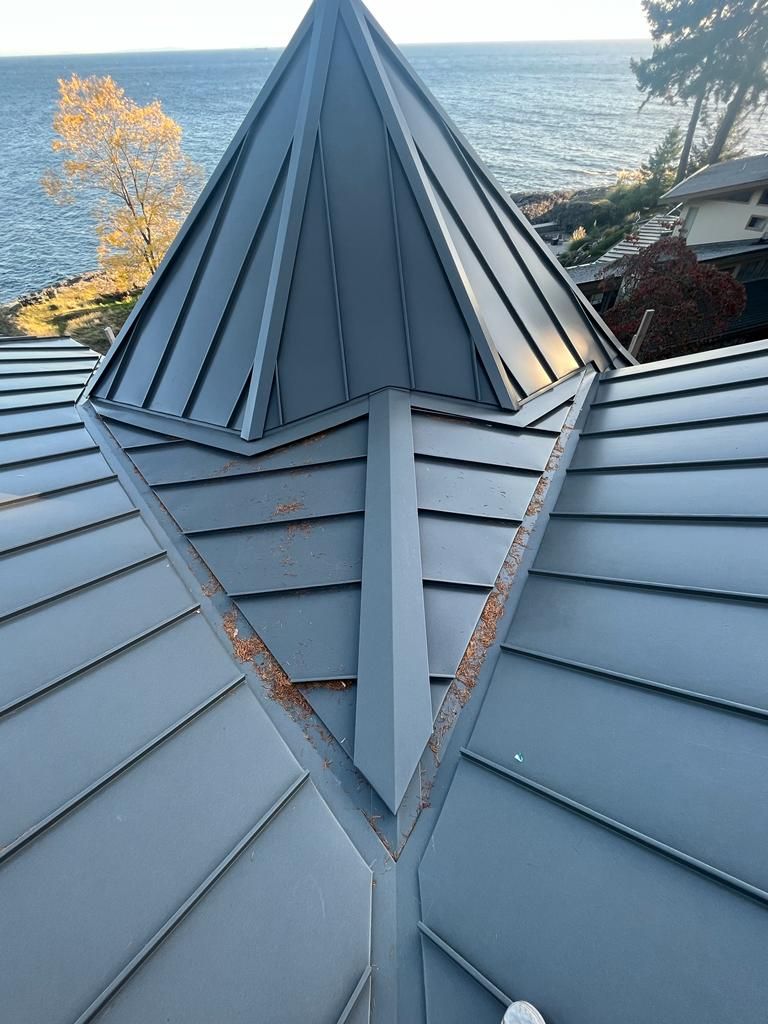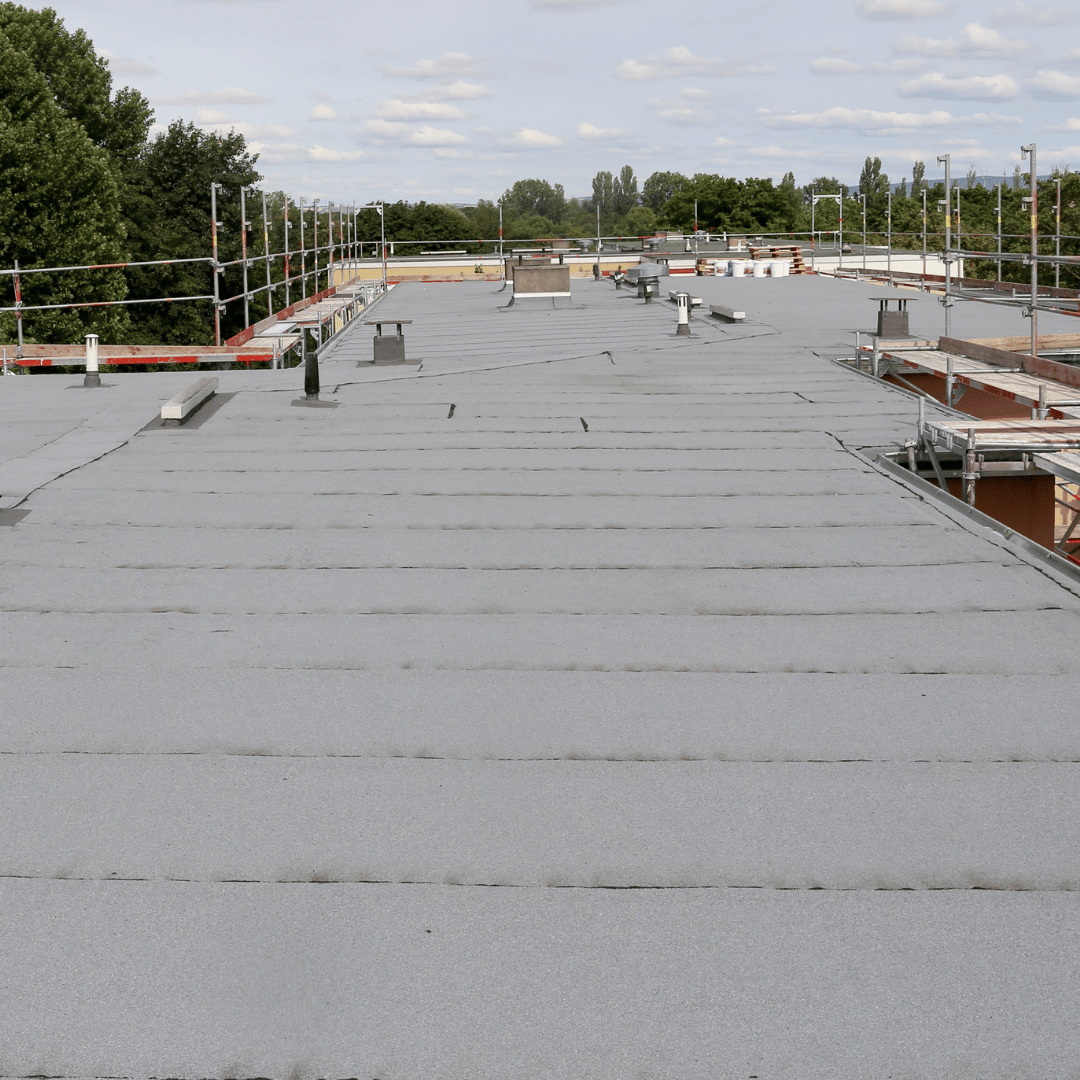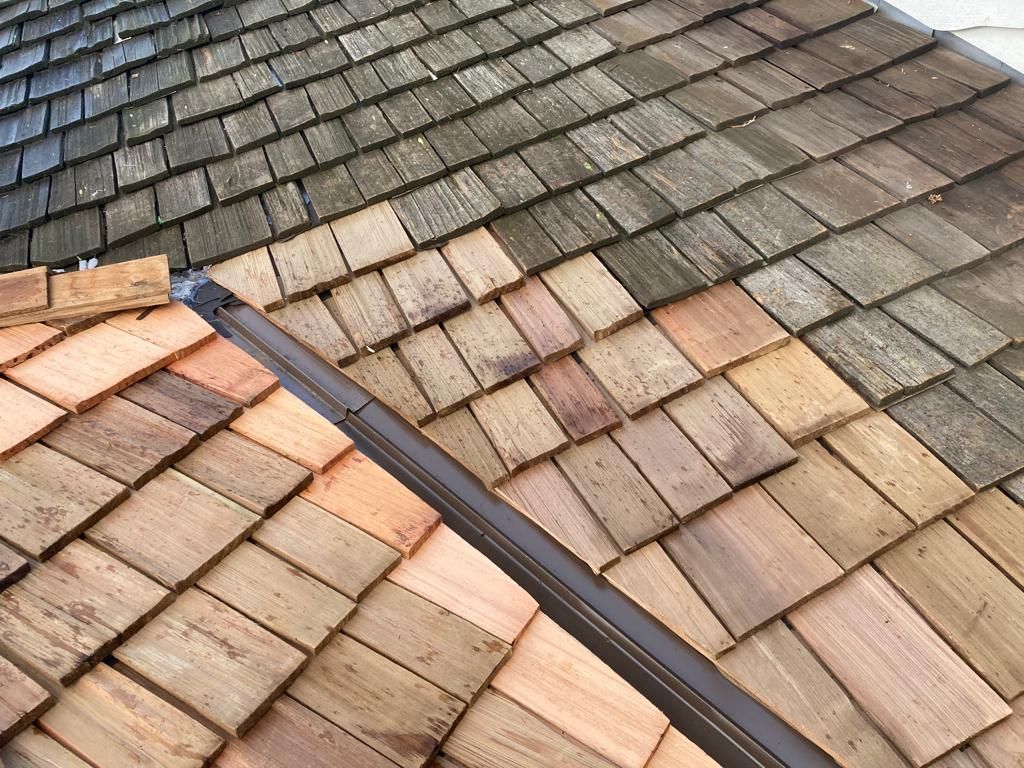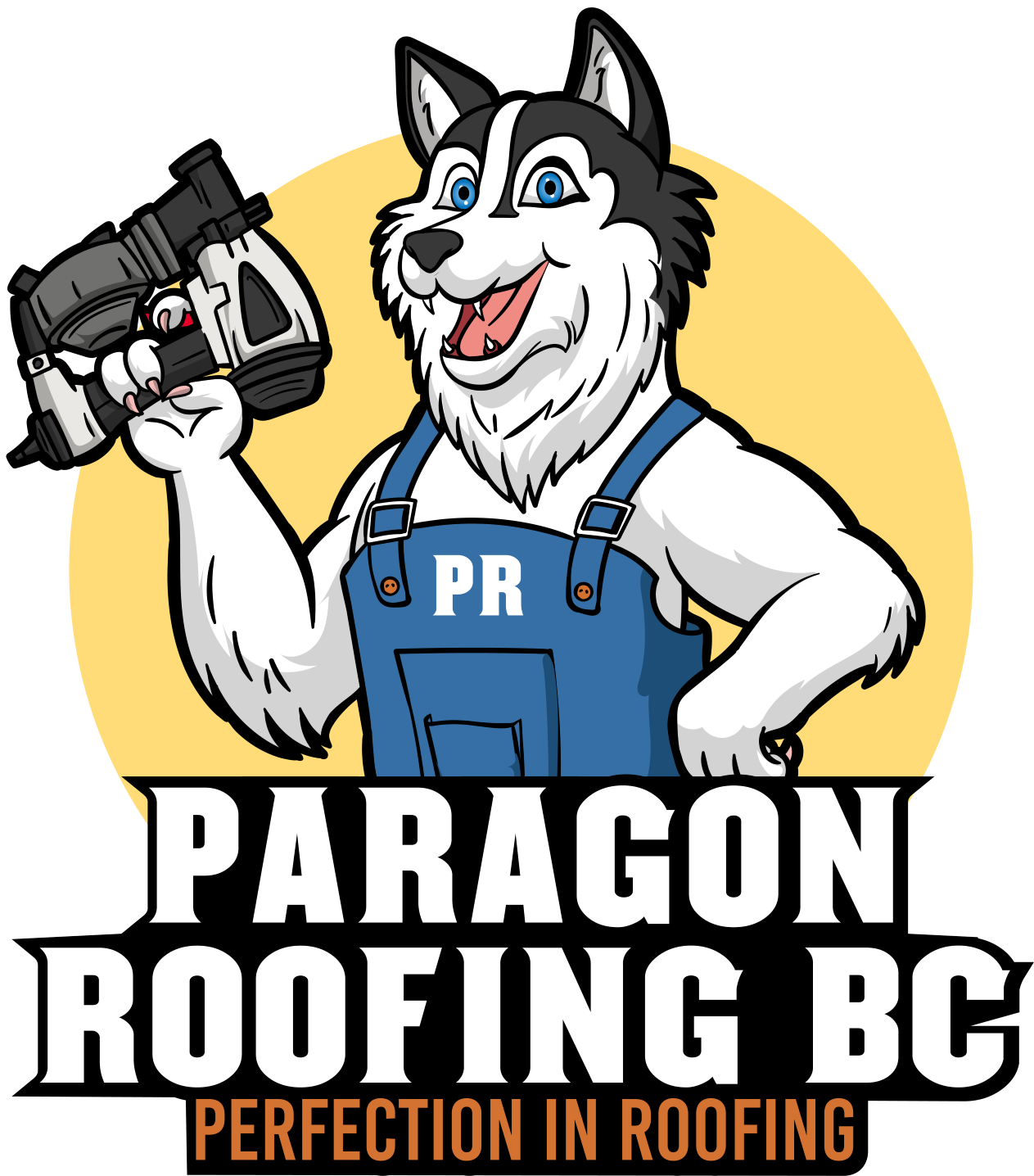Call Today
12233 92 Avenue, Surrey, British Columbia V3V 7R9, Canada
Reach Out
CALL US TODAY · 604-358-3436
12 Signs You Need a Professional Roof Inspection in Vancouver: Advice from Paragon Roofing BC
Roof Inspections are Essential in Vancouver, Here Are Your Signs!
1) You’ve Spotted Visible Leaks (Not Just a Small Drip)
Okay, so there’s a myth floating around that a couple of small drips in the living room are normal—especially with all the rain we get out here in Vancouver, Burnaby, Coquitlam, Surrey, Delta, and basically the entire Lower Mainland. Let me tell you: a leak is never something to shrug off. As a roofer who’s been clambering around rooftops for a good while, I’ve come across countless winter fiascos where folks thought a little drizzle inside was just a “quirk.” The reality: water can travel in sneaky ways, running across rafters, down insulation, and then popping out somewhere random. By the time you see those droplets, the damage could already be in stealth mode.
I remember a winter case in Richmond. The homeowner noticed a drip near the attic hatch only when it was raining heavily and assumed it was a small crack. Turned out the plywood under her shingles was practically turning to mush. We had to hustle in the middle of a sleet storm, but it got done in record time. You don’t want that headache, trust me.
- DIY Tip: If you’re noticing water stains but can’t pinpoint the source, get up there (safely) on a clear day and check the attic with a flashlight. Look for dark stains, mold, or damp insulation. Don’t forget a good mask if you suspect mold—better safe than sorry.
- When to Call a Pro: When the leak is persistent or if you see multiple water spots forming. If you aren’t sure you can safely navigate your attic or roof, it’s better not to risk it.
2) Curling, Cracked, or Missing Shingles
Sometimes, you’ll be out in the front yard in Surrey tossing a ball around (or, more likely, wrestling the recycling bin in a rainstorm) and glance up at your roof, only to see some suspicious curly shapes or big missing patches. That’s a big sign your roof might be in distress. Shingles wear down over time, especially with Vancouver’s climate mood swings: one minute it’s drizzling, next minute it’s a freeze warning, then we get a glorious sunny day that bakes everything.
Shingles are your roof’s first line of defense against all that moisture we get. Once they peel up or crack, water has an easier path to get under your roof deck and into your attic. And if some shingles are altogether missing, that’s a direct open-door policy for water infiltration. If you combine that with the constant threat of our winter storms—especially December through February, with frequent wind gusts that can go over 70 km/h—there’s a significant chance of roof damage.
- Local Building Code Note: According to certain municipalities, like Vancouver and surrounding areas in BC, the roof coverings must adhere to specific wind-driven rain standards. That essentially means your shingles (or other materials) should meet a certain threshold for wind resistance. Missing or curling shingles is a red flag that your roof may not be up to snuff and might need a roof replacement.
- Experience Anecdote: A family in Delta called me once after a nasty windstorm to say that half their shingles were lying in the backyard. It was a 15-year-old roof, so not ancient, but enough wear-and-tear combined with the storm’s winds peeled them right off. We helped them patch the entire affected area before the next round of rain came. They were relieved.
3) Those Little Black Granules in the Gutters
I know, gutters aren’t usually your top priority until they overflow, but do yourself a favor: next time you’re cleaning them (or have them cleaned), pay attention to what’s in there. If you see mounds of black or grayish grit, that’s likely shingle granules. These granular bits are designed to protect the shingles from UV rays and the brunt of the weather. When they start sloughing off en masse, your shingles are nearing the end of their life or at least losing their protective top layer.
In Vancouver’s wet climate, our roofs can degrade faster if they’re not well-ventilated or if the shingles are older and battered by repeated winter storms. I’ve seen roofs that looked okay from the ground, but the gutters told a different story: lumps of granules every few meters. When that happens, it’s time for a thorough inspection.
- Statistical Data: According to Environment Canada data, Vancouver can see upwards of 161 rainy days per year, and in particularly harsh years, the winter storms can exacerbate roof wear, leading to a significant portion—some estimates say around 10% of homes—sustaining moderate roof damage annually.
- DIY Tip: If you notice a sprinkling of granules here and there, it might just be normal aging. But if you’re scooping up handfuls of the stuff, that’s a big neon sign your shingles are wearing down.
4) Moss, Algae, or Lichen Taking Over
Got green fuzz creeping across your rooftop? Vancouver’s mild, damp winters make a perfect breeding ground for moss and algae. I can’t tell you how many times I’ve visited older homes in Coquitlam or North Van and found entire swaths of their roof covered in spongy moss. It looks almost quaint, like something out of a storybook, but it’s absolutely not good for your shingles or your structural integrity. Moss is like a sponge that holds moisture against the roof surface, and over time, that can lead to rot, leaks, and shingle damage.
If you have a flat roof, watch for algae or lichens as well. Those can cause discoloration and degrade your roofing membrane if left unchecked. The Lower Mainland’s high humidity levels, combined with frequent overcast weather, give these organisms the perfect environment to flourish.
- Experience Insight: Last winter, I got a panicked call from a homeowner in Surrey: they saw moss on their shingles and tried to scrape it off with a shovel. Don’t do that. They ended up stripping off the protective granules. We ended up replacing a good portion of those shingles.
- DIY Tip: Gently remove moss with a soft brush or a specialized moss treatment product. Or, if the infestation is large, call a professional. The key is to prevent further growth, ensure no moisture is trapped, and avoid damaging the shingles.
5) A Sagging or Uneven Roof Deck
This one is big. Anytime you notice that your roofline looks wavy or dips in certain areas, it’s time to pay attention. Roof sagging usually indicates structural issues, often related to prolonged water damage, rotting support beams, or excessive weight from snow—yep, we do get snow in the Lower Mainland, and it can come in unexpectedly heavy dumps.
- Statistical Data on Snow Load: According to the BC Building Code, the snow load requirement can vary based on your exact location and elevation. For many parts of Metro Vancouver at lower elevations, the ground snow load may be around 1.5 to 2 kPa (roughly 31 to 42 pounds per square foot). But in some hillier areas or inland suburbs, it can be higher. If your roof wasn’t built or maintained to handle these loads—especially if you get a freak snowstorm dumping 20 cm of the white stuff—sagging can happen.
- Quick Winter Disaster Story: I once dealt with an urgent situation in North Vancouver during a sudden snowfall a couple of years ago. The homeowner had a borderline compromised roof deck that already had a slight sag. The added snow weight plus some older water damage made that sag go from “kind of noticeable” to “impossible to ignore.” We ended up having to shore up the attic framing right away. The moral of the story? Don’t wait until there’s a foot of snow up there to notice.
6) Rusted or Damaged Flashing
Flashing is that thin metal (sometimes aluminum, sometimes galvanized steel) installed around roof joints, chimneys, skylights, and vents. Think of it like the protective trim around all the little holes and edges on your roof. If water gets behind that flashing, you can say hello to leaks in those vulnerable spots.
In the Lower Mainland’s damp environment, rust or corrosion can appear over time, especially if the flashing was installed incorrectly or has been battered by storms. Damaged flashing is one of the most common culprits when folks say, “But I only have a small leak around the chimney!” Well, that “small leak” can turn into a big problem if not addressed.
- Authority Note: Local building codes here typically emphasize that flashing should be installed per the manufacturer’s guidelines and properly integrated with the roofing material. That means if your flashing’s corners aren’t sealed right or you see rust streaks, it’s not just cosmetic—it’s code non-compliance.
- DIY Tip: If you’re comfortable on your roof (and only if you’re safe), check your flashing for cracks, warped metal, or rust spots. Sometimes a bit of sealant can fix minor issues, but if it’s extensively rusted or pulling away, you might need a more thorough repair or replacement.
7) Interior Water Stains on Ceilings or Walls
Picture this: You walk into your living room, look up, and there’s a big, ominous ring of yellow or brown on the ceiling. That’s a water stain, and it’s basically your roof’s way of screaming for help. Many folks in Vancouver notice these spots in the aftermath of a heavy winter rainfall. If you see stains on the ceiling or upper walls, it’s a huge clue that water is getting through somewhere.
- Experience Tale: I had a call from a client in Burnaby who noticed a stain in her second-floor bedroom. She assumed it was from a leaky pipe. But when we checked the attic, we found that water was coming in through a gap in the flashing around a dormer window, traveling down the inside of the wall, and then showing up in that bedroom. Not something a simple plumber fix could handle. We sealed the gap, replaced some compromised plywood, and that was that.
- When to Worry: The moment you see discoloration, test the spot with a moisture meter if possible. If it’s wet or getting bigger, that’s not something you can ignore.
8) Heating Bills Suddenly Skyrocket
No one loves paying bills, especially energy bills that seem to escalate every winter. But if you notice an unusually large spike—bigger than what BC Hydro says is normal for your area—you might want to consider the possibility that your roof or attic insulation is compromised. When your roof’s ventilation or insulation is damaged by moisture, heat can escape much faster, forcing your heating system to run longer.
- Trustworthiness Factor: A professional inspection can help pinpoint if the problem is with the roofing structure, the attic insulation, or something else entirely. But as the homeowner, it’s helpful to track your energy usage. If your monthly or quarterly usage has inexplicably jumped by, say, 20–30% compared to previous winters, it’s time to do some detective work.
- DIY Tip: Pop into your attic on a chilly day. Feel for drafts. Sometimes, you can locate a drafty area or see light shining through a gap. If so, you may need new insulation or roofing repairs in that spot.
9) You See Daylight (and That’s Not Good)
While a roof is meant to keep the weather out, it’s easy to forget it also blocks out light. So, if you can see a streak or two of sunlight peeking through the boards in your attic, that means there’s a direct opening, and if light can get in, water definitely can. This happens often around the eaves, ridge vents, or in older homes where boards have warped.
- Personal Note: I inspected a 30-year-old house in Delta last year—stood in the attic and immediately spotted multiple pinpoints of light near the rafter edges. The homeowner hadn’t noticed any leaks yet, but those points could have turned into a major water infiltration issue, especially once those December torrential rains arrived. We replaced some worn-out boards and installed a better vent system.
- DIY Tip: Grab a flashlight or rely on the ambient sunlight on a bright day. If you see those beams of light in your attic, mark them (if safe to do so) so you can show a professional or return later to patch them. It might be a quick fix if caught early.
10) Damaged Soffits or Fascia
Soffits are the underside of your roof’s overhang, and fascia is the front board along the roof’s edge. Both are there to help keep moisture and critters out of your attic, as well as provide ventilation. If you see peeling paint, rotting wood, or general deterioration along these areas, it can mean water is sneaking in where it shouldn’t.
- Practical Example: In Surrey, a homeowner once showed me how their soffits were crumbling. Turns out water from the roof was draining right behind the gutters, saturating the fascia and soffit area. The wood eventually rotted, and the entire corner became a lovely nesting area for rodents. Fixing that wasn’t fun, but we got it done.
- DIY Tip: Keep your gutters clean. Overflowing gutters are often the root cause of fascia damage. Check for any cracks or holes in the gutter system. Also, make sure the water flows away from the foundation—one problem can escalate into many if left unchecked.
11) Forming or Recurring Ice Dams
Ice dams might not be as common in Vancouver as they are in colder Canadian cities, but they still happen—especially in areas like the Fraser Valley or North Shore where winter temperatures can dip just enough to freeze the runoff. An ice dam forms when melting snow runs down the roof and refreezes at the eaves, causing a literal dam of ice that traps water. Eventually, that water can back up under the shingles.
- Statistical Tidbit: While the Lower Mainland doesn’t get hammered with snow each year, we do see a few big dumps. And when the temps float around freezing, ice dams are a realistic concern. About 1 in 12 calls I get during snowy periods is related to ice dam leaks.
- Why This Matters: Ice dams can pull gutters off, damage shingles, and lead to leaks in the attic. Plus, they’re just dangerous when large sheets of ice suddenly break loose.
- Solution Approach: Adequate attic insulation and ventilation are crucial. Warm air escaping to the roof surface is what causes the top layer of snow to melt in the first place. Then it refreezes at the cooler eaves. Sealing air leaks in the attic and ensuring proper ventilation can mitigate ice dam formation.
12) Recent Extreme Weather or Storm Damage
Let’s talk storms. Vancouver and its surrounding cities often experience “Pineapple Express” systems—warm, moisture-laden storms blowing in from the Pacific. While they might not always come with hurricane-force winds, we do sometimes get gusts that are powerful enough to rip off shingles or fling debris onto the roof. Not to mention, we’ve had freak windstorms in the past (like that infamous one a few years back) that left thousands without power and plenty with roof damage.
If your home was exposed to strong winds, hail, or a snow event, it’s wise to do a basic inspection afterward. You might not see the damage right away—maybe a shingle corner is lifted just a bit, or a tree branch punctured the roof in an out-of-sight area. Over time, these minor issues can let water in, leading to bigger headaches down the road.
- Real-Life Scenario: After a windstorm, I checked a roof in Burnaby that had a large branch lodged into the corner of the shingles. From ground level, it looked like it was just resting up there. But upon closer inspection, that branch had actually punctured the underlayment. Water was seeping in slowly. We were able to fix it before the next rainfall turned it into a full-blown leak.
Experience: Helping Folks Through Winter Disasters
Winters in the Lower Mainland can be unpredictable. One year we get minimal snowfall, the next we’re dealing with nearly a foot or two in some areas, plus that classic sideways rain. We’ve stepped in multiple times right after storms—sometimes in the middle of the night, during a pounding hailstorm—because a homeowner discovered water gushing through the ceiling. In these critical situations, fast action is key. We’ve learned that having tarps, extra plywood, and a reliable crew on standby can literally save a home from thousands of dollars in damage.
I still recall a family in Surrey who called me around midnight one winter. The roof had partially collapsed in their garage after a heavy, wet snowfall piled up. They were panicked, worried the entire thing might cave in. We rushed over, did some emergency support, shoveled off the roof, then came back the next day once it was safer to complete a more permanent repair. I share these stories not to brag—believe me, it’s not a walk in the park to climb a roof at midnight—but to remind folks that sometimes you really do need a professional to step in quickly.
Expertise: How Often Winter Storms Cause Roof Failures
Statistics from local meteorological data and insurance reports suggest that approximately 10–12% of homeowners in the Vancouver region experience some kind of roof-related damage each winter—usually minor, but it can be major in some cases. High winds can rip off shingles, water can seep in through compromised flashing, and our temperature swings lead to freeze-thaw cycles that degrade roofing materials.
On top of that, the BC Building Code is quite specific about required snow loads and drainage. If a roof was built several decades ago or has never been properly maintained, it’s more at risk when storms strike. Something as seemingly minor as a cracked seal can be exploited by months of steady rain. It’s an example of how our mild climate can be deceiving: “It’s not that cold, so no big deal,” people think, until that persistent rain has done its stealthy damage.
Authority: Local Building Code Notes on Snow Loads & Heavy Rainfall
Here in British Columbia, roofing systems must be designed to handle both the typical rainfall and the potential snow load. Even if it’s not as heavy as in interior BC or northern areas, we still have guidelines that require certain structural components, underlayment specifics, and proper ventilation. Municipalities in Metro Vancouver often have by-laws that mirror or enhance provincial code requirements, especially around
ensuring adequate drainage and flashing.
For example, some coastal regions require an underlayment that meets or exceeds CSA (Canadian Standards Association) standards for wind-driven rain. In parts of the Fraser Valley with higher elevations, snow load requirements can jump significantly. While I don’t want to bore you with code numbers, it’s good to know that if your roof is older and hasn’t been inspected in years, it could be “grandfathered in” under outdated guidelines and might not stand up to the more extreme weather patterns we’ve seen in recent years.
Trustworthiness: Transparent Solutions, Including DIY Tips and Professional Help
A roof inspection doesn’t always mean you’re automatically roped into a costly project. Sometimes, all you need is minor upkeep. For instance, you might replace a few shingles, clear moss, or fix a crack in the flashing. If you’re comfortable working on your roof and have the proper safety gear, you can handle these smaller tasks on your own. But if you see bigger red flags—like widespread rot, a sagging deck, or multiple leaks—it’s time to call in a professional.
When you do call a pro, ask for a thorough assessment. Don’t hesitate to request photos of any damaged areas. A reputable roofer will show you pictures or videos of what’s happening up there. They should also give you a range of options if possible. Maybe you can do a targeted repair instead of a full replacement. It depends on the roof’s overall condition, age, and the specific damage.
Also, keep an eye on the weather forecast. If a major storm is coming, and you suspect any vulnerabilities in your roof, schedule an inspection ASAP. Trust me, you don’t want to discover major leaks in the middle of a howling windstorm.
Detailed Discussions on the 12 Points
Below, let’s add even more depth and variety regarding each point—because let’s be honest, roofs aren’t straightforward, especially in a place like Vancouver with its whimsical weather patterns. And as someone who’s crawled over countless attics, discovered hidden mold, scooped out more soggy insulation than I’d care to recall, I’ve got quite a bit to say on these topics.
1) Visible Leaks
- Long-Term Consequences: Chronic leaks can foster mold growth, which can lead to respiratory issues for you or your family. Plus, wood rot in rafters or trusses can lead to expensive structural fixes.
- How Quickly Should You Act? Immediately. Even a slow drip can do damage if it persists, especially around electrical wiring or drywall.
2) Curling, Cracked, or Missing Shingles
- Why Shingles Fail: UV radiation breaks down the asphalt over time, storms cause mechanical wear, and freeze-thaw cycles can crack them.
- Check Different Sides: The roof’s south-facing side might age faster due to more sun exposure. Don’t forget to inspect each slope.
3) Granules in Gutters
- What the Granules Do: They shield the asphalt from direct sunlight, extend shingle lifespan, and provide a bit of fire resistance.
- Color Change on Roof: If a large section of your roof is suddenly looking lighter or more patchy in color, that can also be a sign of granule loss, not just what you see in the gutters.
4) Moss, Algae, or Lichen
- Preventative Measures: Zinc or copper strips along the ridge can help inhibit moss growth. Also, regularly trimming nearby trees to let sunlight in can reduce moisture retention.
- Removing Large Infestations: Gentle power washing on the lowest setting with the correct nozzle can work in some cases, but you need to be very cautious not to damage shingles.
5) Sagging Roof Deck
- Listen for Creaking: If you hear unusual creaking or notice new cracks in interior ceilings or walls near rooflines, that can indicate structural shifts.
- Temporary vs. Permanent Support: Sometimes you might need to add temporary bracing in your attic until a thorough repair can be scheduled.
6) Rusted or Damaged Flashing
- Multi-Point Inspections: Check around skylights, chimney bases, vent pipes, and any dormer windows. One small gap in flashing can funnel a surprising amount of water inside.
- Sealants and Gaskets: Some vents have rubber gaskets around them, which can crack over time, leading to water infiltration.
7) Interior Water Stains on Ceilings or Walls
- Don’t Just Paint Over: It’s tempting to do a quick fix by painting over stains. But if you don’t fix the source of the leak, the stain will come back or the underlying damage will worsen.
- Check Wall Cavities: Sometimes the leak runs down inside the wall cavity before manifesting as a stain. A moisture meter or infrared camera can help detect hidden moisture.
8) Heating Bills Suddenly Skyrocket
- Insulation Check: If your attic insulation is damp from a leak, it loses its R-value (insulating power). That might be why your bills are going through the roof—pun intended.
- Ventilation Matters Too: A well-ventilated attic helps regulate temperatures, preventing excessive heat buildup that can melt snow or cause premature aging of shingles.
9) You See Daylight
- Gable Ends and Ridges: Light often comes in near the apex (ridge) or the edges (gables). Check carefully, especially where roofing materials overlap.
- Critter Alert: If there’s enough space for light, sometimes rodents or insects find their way in too. Another reason to patch those gaps.
10) Damaged Soffits or Fascia
- Importance of Paint or Sealant: Keeping these elements painted or sealed prevents water from penetrating the wood.
- Ventilation Holes: Many soffits have vent holes or perforations for air circulation. Make sure they aren’t clogged with debris or painted over.
11) Forming or Recurring Ice Dams
- Short-Term Fixes: Carefully remove built-up snow from the roof edge, but be extremely cautious. Sometimes people use roof rakes to pull snow down.
- Long-Term Fixes: Improve attic insulation, seal air leaks, and ensure your attic is well ventilated so warm air doesn’t gather at the underside of the roof.
12) Recent Extreme Weather or Storm Damage
- Periodically Inspect: Even if there was no obvious sign of damage, do a quick inspection or have a pro do it after a major storm. Better safe than sorry.
- Check Neighbors’ Roofs: If your neighbors lost shingles or had roof damage, there’s a good chance you may have similar issues, even if yours aren’t immediately obvious.
There you have it. Those are the 12 signs to keep an eye on, plus a whole bunch of related info that I’ve picked up from years of scrambling around roofs in Vancouver and its neighboring cities. My best advice? Don’t wait until you’ve got a full-blown disaster on your hands. A simple inspection—whether you do it yourself (safely) or ask a seasoned pro—can save you a ton of stress, headaches, and money in the long run.
Stay warm, stay dry, and keep an eye on that rooftop. If you spot any of these warning signs, take action sooner rather than later. Enjoy our wet, sometimes snowy, always surprising Lower Mainland weather with confidence, knowing your roof is prepared for whatever Mother Nature decides to toss at us next!
How often should I inspect my roof in Vancouver’s rainy climate?
Aim for at least twice a year—once before the rainy winter season and once after it. And always after a major storm, just to be sure.
Can I inspect my roof by myself safely?
Yes, but only if you’re comfortable with heights and have the correct safety equipment (like a stable ladder and a harness if needed). Otherwise, consider calling a professional.
Are tiny leaks something I can fix with a simple sealant?
It depends on the source. If it’s a small gap in flashing, a high-quality roof sealant might suffice. But if the leak is due to deeper issues (like rotting plywood), you’ll need more extensive repairs.
What if I see moss but no other issues?
Moss is an issue itself because it traps moisture. Over time, it can degrade the shingles or the underlying structure. Gently remove it or hire someone who can do it properly without causing damage.
How long do asphalt shingles typically last in the Lower Mainland?
Generally, around 20–25 years, depending on the quality of installation, maintenance, weather conditions, and whether the shingles are premium or basic.
Can I walk on my roof to inspect it?
Walking on a roof can be risky—you could damage shingles, especially if they’re old or if there’s moss making it slippery. If you have any doubt, let a pro handle it.
Why am I seeing granules in my gutter but the shingles still look okay?
Some granule loss is normal aging. But if you’re seeing large amounts, it might be time to investigate more thoroughly.
Does insurance cover storm damage to my roof in Vancouver?
Generally, yes—if it’s sudden and accidental storm damage. But every policy is different, so it’s best to check with your insurer.
What is the best time of year for a professional roof inspection?
Late summer or early fall is ideal—before the heavy rain and snow start. That way, you have time to address any issues in good weather.
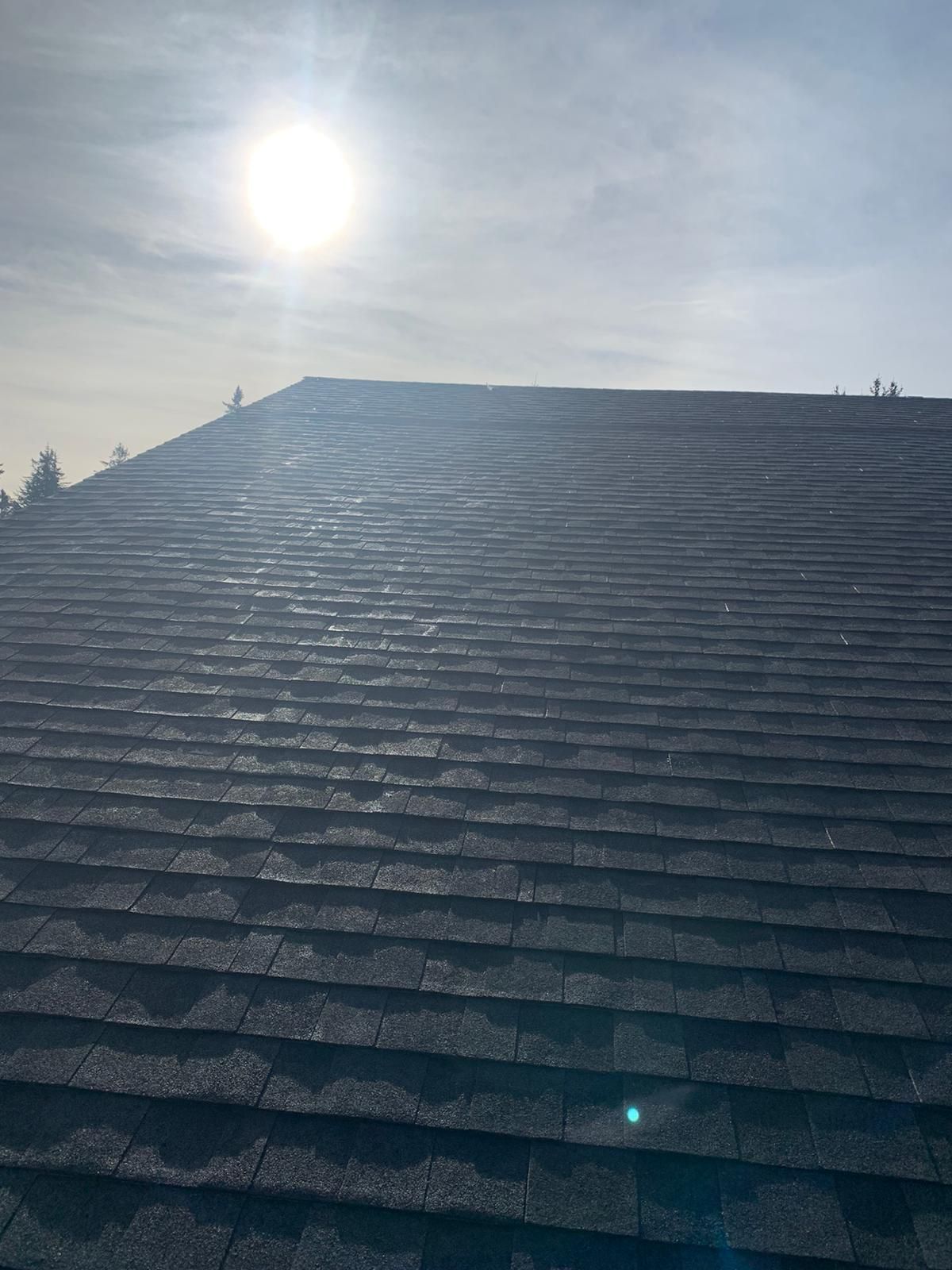
Our Roofing Blog
Have more questions about roofing?
Check out our FAQs or give us a call today to speak to an expert roofer in Vancouver Lower Mainland, BC. We're here to help our neighbours make educated decisions about their roof. For our team, we value helping clients save money while making their roofs last.
All Rights Reserved | Paragon Roofing BC | Web Design & SEO by Piiper Digital Solutions

